Terry pelargonium: main varieties and care
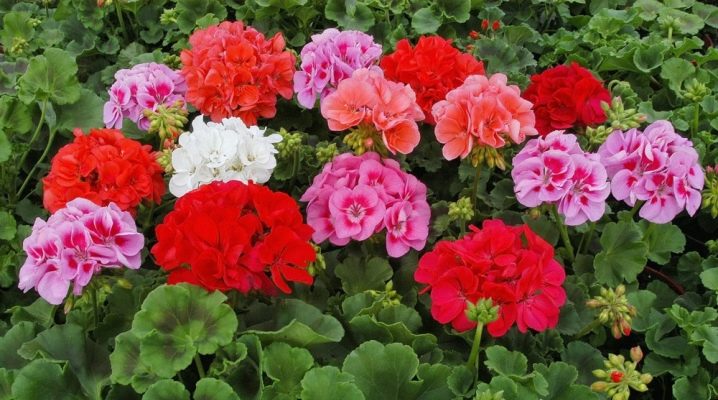
You can hardly find a person who does not know what geranium is. A plant with a recognizable scent of leaves has become so popular among flower growers that you can find it in almost any office or apartment where flowers are loved. At the same time, few know that the real name of this flower is pelargonium. It is called geranium because it belongs to the Geranium family.
A real geranium, aka a crane, aka Geranium, is a completely different plant that looks different. Nevertheless, in society the name "geranium" has long stuck to pelargonium, even experienced flower growers use it.
The homeland of pelargonium is South Africa. She came to our latitudes so long ago that she became familiar and familiar to the eyes.
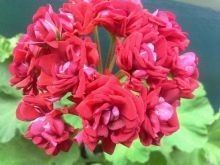
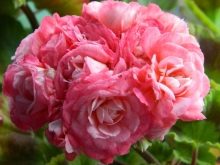
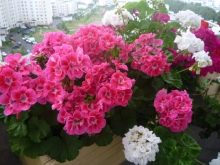
Peculiarities
The type of pelargonium, which so confidently settled in the pots of housewives and other lovers of indoor flowers, is terry pelargonium. This species is considered one of the most tenacious and beautiful. It meets all the requirements for decorative colors. Terry pelargonium has many different varieties that differ in their descriptions, but have the same care methods.
Despite their rather compact size, most pelargonium varieties bloom in lush and vibrant flowers. The fact that with proper care, the plant can bloom almost all year long - 9-10 months a year. This feature only adds to the love for her as an ornamental plant.
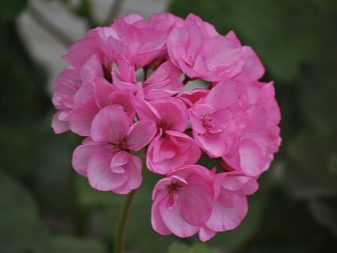
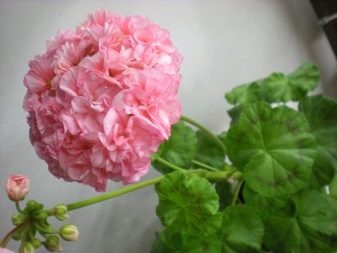
Pelargonium can survive in almost any conditions. Even when it is poorly looked after and does not provide everything necessary, the flower fights for its life to the last.
Pelargonium is loved not only for its beautiful flowers and enviable vitality. This plant is equally comfortable both on the windowsill in a pot and on a flowerbed in cities with a relatively warm climate, which makes it versatile.
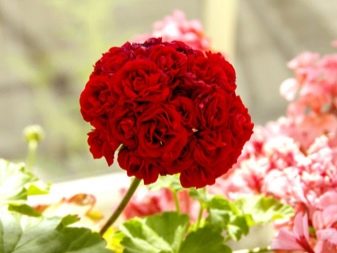
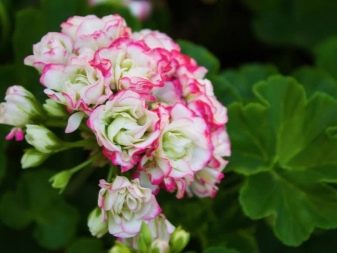
Popular varieties
There are so many varieties of pelargonium that it will be rather difficult to list them all. Basically, they differ in the size of the bush, the color and splendor of the inflorescence, sometimes in the leaves. The most popular varieties and their distinctive features will be listed here.
- Ludwigsburger Flair. This variety is distinguished by its multi-colored petals. Flowers of such pelargonium have white-pink shades interspersed with green. The plant does not grow very large and belongs to the dwarf, but at the same time it has very large and lush inflorescences.

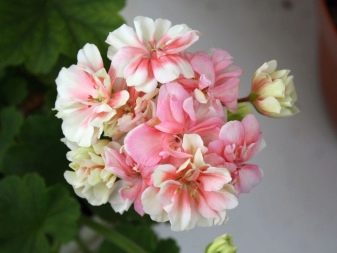
- "Silk Lagoon". The bushes that belong to this variety are distinguished by their diminutiveness and lush inflorescences. The color of the flowers can range from light peach to coral. The flower petals are folded, as if pleated, which adds visual doubleness to the flowers.


- Kenny's Double. This variety has neat spherical inflorescences, for which flower growers especially love it. The color can be red or bright crimson.
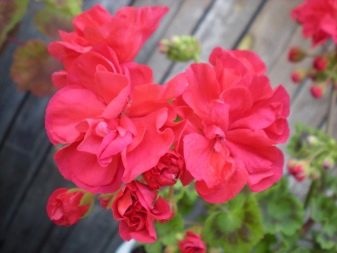
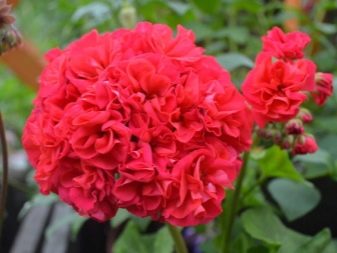
- Elmsett. Dwarf variety. Takes up little space on the windowsill. At the same time, it blooms with large inflorescences for its small growth. The color of the flowers is speckled: the main color of the petals is white or pale pink, and the blotches are bright pink.
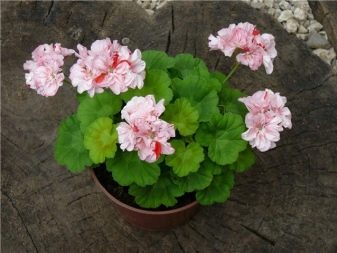
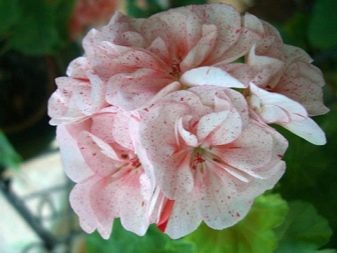
- "Silk Swan". The variety of this pelargonium is diminutive, but has very thick stems and dense leaves. Flowers "Swan" have large, smooth petals and white color, sometimes with a lilac tint.

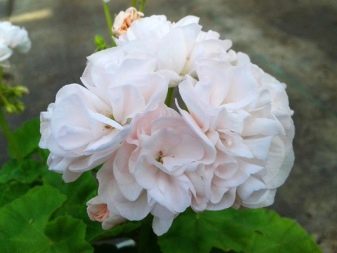
- "Silk Aurora"... The flowers look double with densely planted petals. The color in peach tones can be modified.If the flowering plant is placed in a cooler place, then light rims will appear on the petals.


- "Silk Alchemist". The variety is distinguished by completely atypical "open" flowers for pelargoniums. Visually, they even resemble pansies or violets. But the inflorescence is the same as in all plants of the species - lush and similar to a ball. The color of the flowers is unusually neon, bright and eye-catching: the main color of the petals is lilac-purple, at the base of the petal there are white contrasting spots.
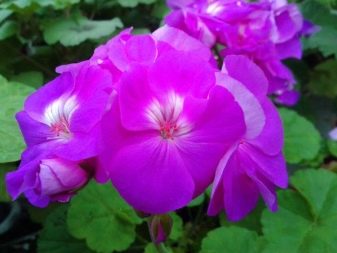
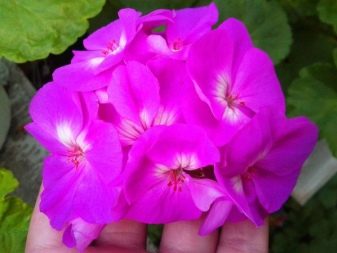
- "Silk fun". The flowers of this variety are colored crimson-red and have a light spot in the center.
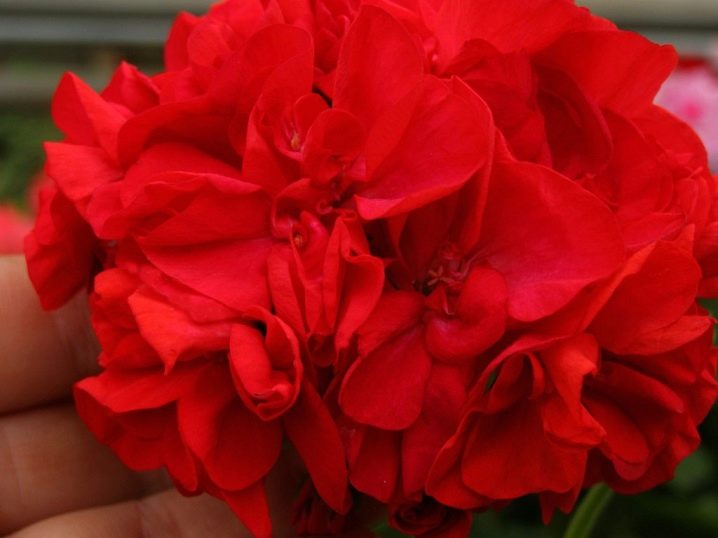
- "Silk Moira". A characteristic feature of Moira is the diminutiveness of the bush, which makes it a desirable guest on any windowsill. For all its diminutiveness, this variety has large inflorescences in apricot tones. Sometimes there are more pink variations.
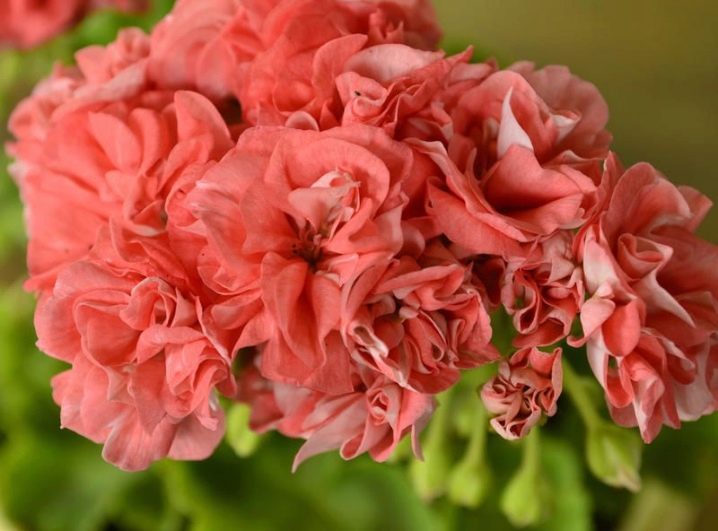
- "Silk Lyrics". The flowers of the variety have a very delicate and warm pink color of the petals with a white underside. The inflorescences look very dense and dense, as if curly or double.
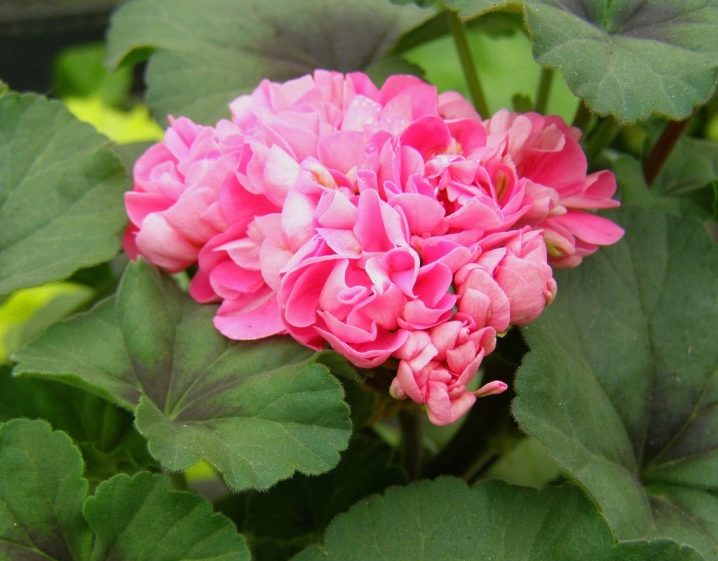
- "Silk openwork" and "Silk moire". Atypical varieties for pelargonium. The flowers have long, elongated petals that stick out to the side. Visually, these varieties are combined with ordinary pelargoniums only with umbrella leaves. The color of the petals of the first is in coral pink tones, the second is pale pink with dark pink veins along the entire length of the petal.


- "Silk bird"... The flowers of this variety are open, with large petals. The main color is white, but from the base and almost to the very tips of the petals there are bright crimson specks, like specks of quail eggs.
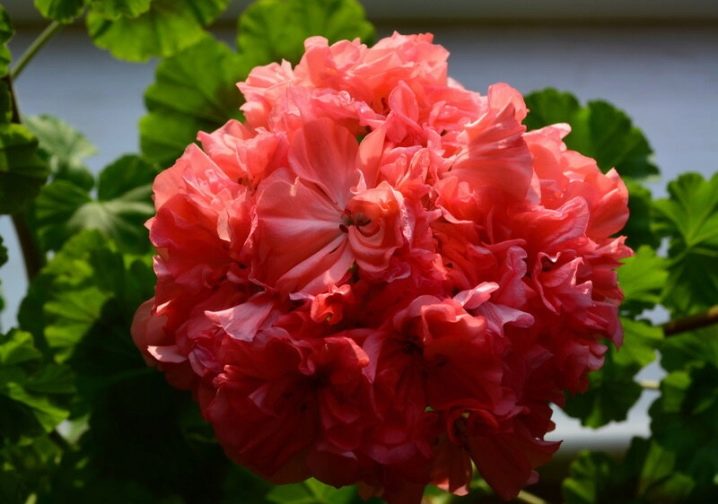
- "Silk of the Marquis". The plant has deep purple flowers with white spots at the base of the petals. The inflorescences of the bush are large and lush.
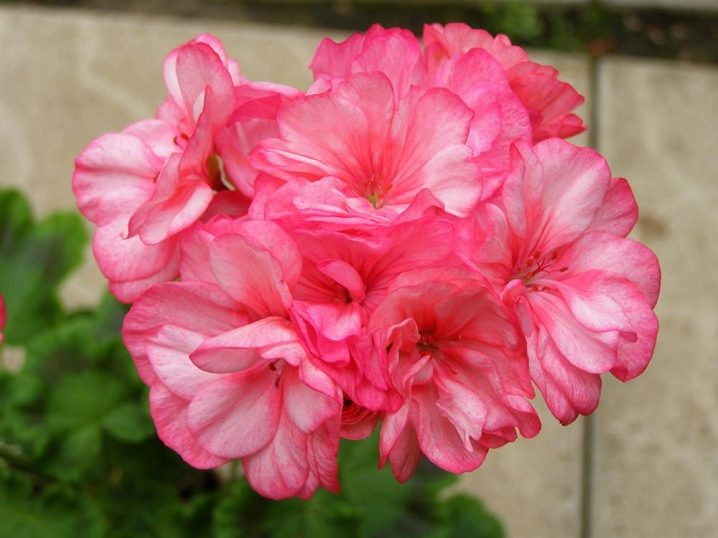
- Pelargonium is white. The name of the variety is associated with the snow-white flowers with which it blooms. Flowers in white pelargonium do not have doubleness, the petals are large, open in different directions (like in violets).

Care rules
Pelargonium cannot be called picky or capricious, although it has its own requirements for the conditions of detention. Let's consider them.
- The soil. Pelargonium loves neutral soil. You can buy a ready-made universal mixture for ornamental plants for her, but it is better to choose soil specifically for pelargonium. To increase the looseness of the soil and provide it with a good level of permeability of moisture and air, you need to add coarse sand to the soil.
A good drainage layer is important in order to protect the pelargonium from excess water in the soil.
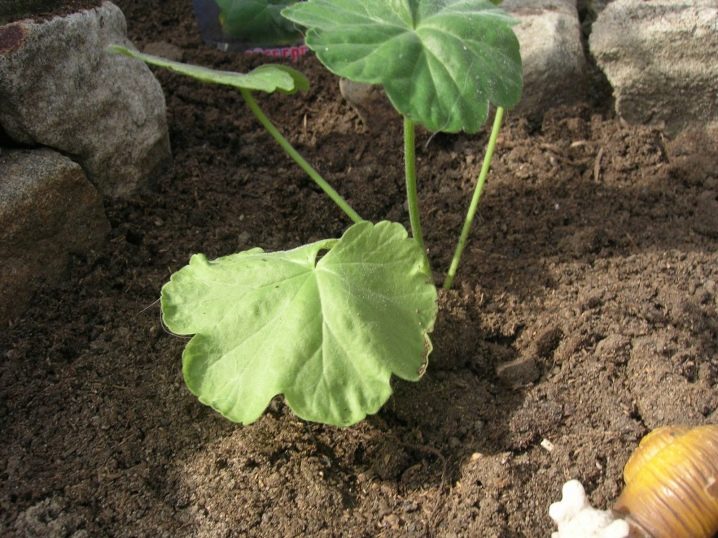
- Lighting. Pelargonium is a light-loving plant. It tolerates direct sunlight and is therefore excellent for growing in flower beds when the climate permits. As a houseplant, pelargonium does not need to be placed in the sun. Glass causes a kind of greenhouse effect, which leads to overheating of the plant. Therefore, in the room you need to choose a place for the pot where the plant will receive a sufficient amount of diffused and safe light for it.
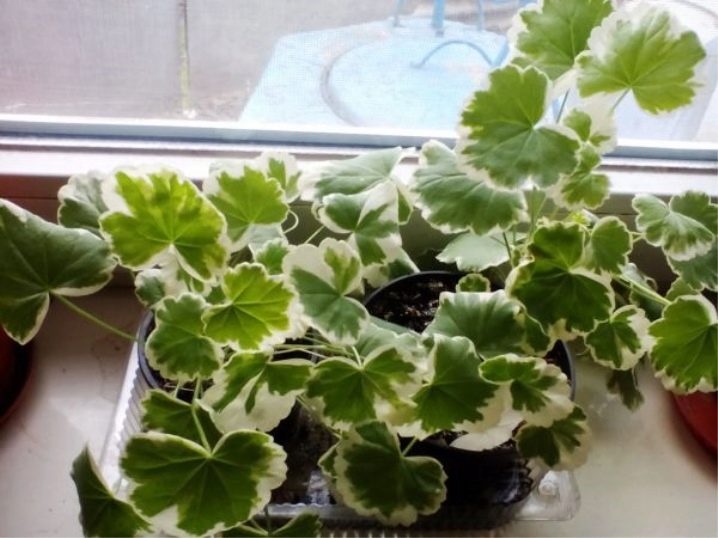
- Temperature. In summer, the plant feels comfortable at a temperature of 17-23 ° C, in winter - 6-15 ° C. If you do not observe the temperature regime, pelargonium will stop blooming or die. This applies to both too high and too low temperatures.

- Watering. Watering the flowers is necessary when the top layer of soil in the pot dries out. The plant loves abundant watering. The soil must be constantly moistened. But it is important that the water does not stagnate in the soil. Therefore, looser soil is needed, plus a good drainage layer at the bottom of the pot.
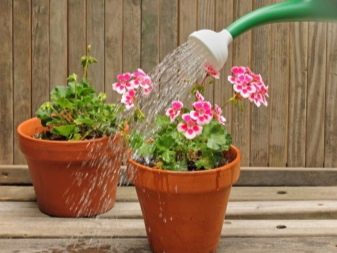
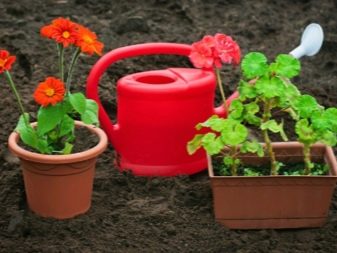
- Top dressing. Pelargonium needs to be fed only during the flowering period. You cannot feed it with organic fertilizers, for example, manure, peat, compost and the like. It is better to choose special fertilizers for this type of plants and use them according to the instructions. The frequency of feeding the plant is twice a month.
By the dormant period, the frequency of feeding is gradually reduced in order to completely stop the plants by the beginning of the rest.
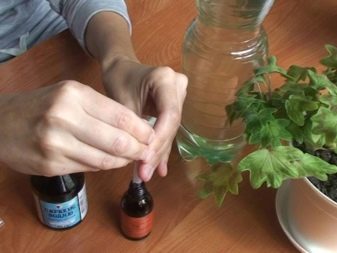

- Pruning and replanting. It is necessary to prune pelargonium if the crown of its bushes becomes too lush. The abundance of leaves prevents the plant from being evenly saturated with light.
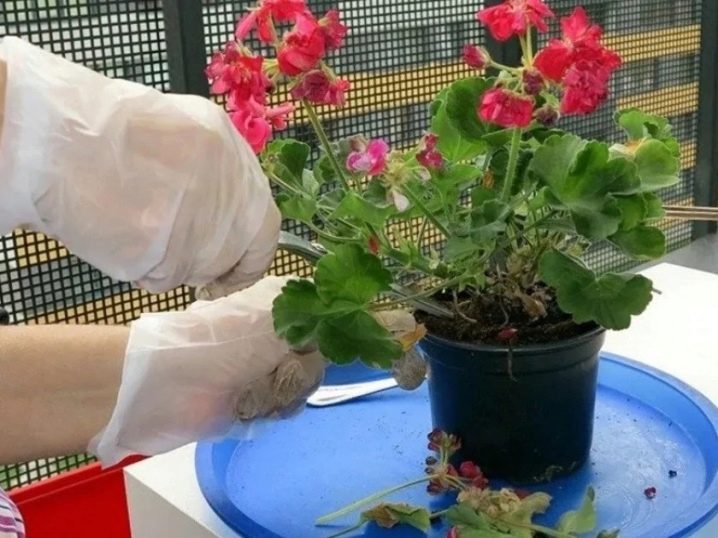
But pelargonium does not require planned transplants. Usually it is transplanted as an urgent need. For example, in cases where:
- the plant was flooded with water;
- the pot is broken or damaged;
- the plant does not have enough space in the existing pot;
- the plant has just been purchased.
You need to choose a small flower pot. The plant does not like spacious pots and may stop blooming because of this.

Separately, the issue of reproduction should be touched upon. Pelargonium propagates by cuttings and seeds.
Cutting is the easiest way. Cuttings are harvested in late summer or early autumn. To do this, they are cut off from an adult plant so that there are 4-5 leaves on the stem. The stalk must be placed in a container of water and wait for the roots to appear. When the stalk grows 2-3 cm roots, you can transplant it into your own pot of soil, and then care for it like an adult plant.
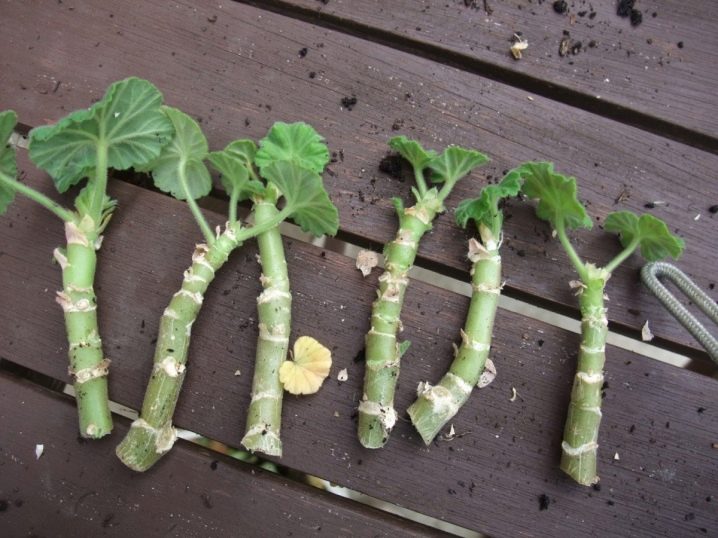
Experienced flower growers are engaged in the propagation of pelargonium from seeds.
Seeds can be bought, or you can collect them yourself. If you use the seeds of your home flower, you need to be prepared for the fact that the daughter plant will not have the distinctive features of its variety.
Before sowing, the seeds must be treated with fine sandpaper, and then soaked for two to three hours in warm water. In order for the seeds to germinate, after soaking, flower growers are advised to process them. a drug that stimulates root growth, such as zircon.
You can sow seeds in one common container, after the sprouts appear, they will need to be planted each in its own separate pot.
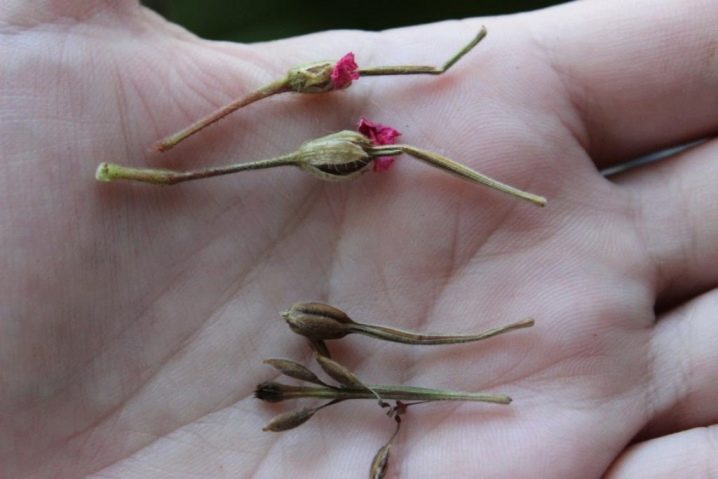
Diseases and pests
When breeding pelargonium, there will be no problems if you provide it with full care. But when an unpleasant thing happens - the flower begins to hurt or is attacked by pests - it is important to notice and eliminate this in time. This will help save the plant.
The main danger for pelargonium is improper care. It is he who entails the onset of symptoms that can lead to the death of the flower.
- A gray bloom appears on the plant - a manifestation of gray rot. Reasons: constant dampness, waterlogged soil in the pot, or poor ventilation. Parts of the plant that have undergone gray rot must be removed, and the causes of its occurrence must be eliminated.
- Pelargonium does not bloom at the right time, the stems between the nodes of the leaves become thinner and longer - the plant does not have enough light. For the pot, it is better to find a place where it will receive enough sun.
- Flower leaves turn red - pelargonium freezes... Care must be taken to ensure that the air temperature in the room is at the level required by the plant.
- The leaves turn yellow, and the inflorescences fall off - problems with watering. Pelargonium either receives insufficient moisture, or suffers from an excess of it. It is necessary to bring the watering regime back to normal.
- Dark spots have appeared at the base of the stem of the plant, which may look like they are pressed into the stem - excess moisture in the soil. These symptoms indicate that the plant is already dying: rotting of the roots and stems has begun. It cannot be fixed.
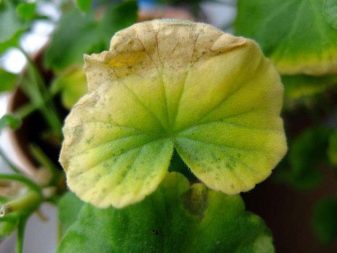
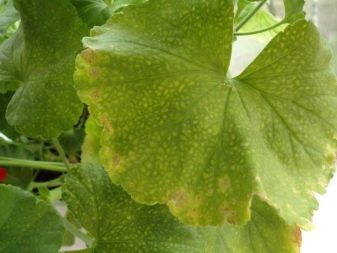
In addition to diseases, pelargonium can become a victim of pests.
- Aphid... Symptoms of the appearance of aphids - the leaves of pelargonium turn yellow and curl, the flowers are deformed, the plant is covered with something sticky. It is better to remove heavily damaged parts of the flower. Then the plant should be treated with an insecticide (for example, "Aklettikom"). In case of a particularly severe infection, the treatment should be repeated after about a week.
- Whitefly. These small white insects like to breed on the underside of the leaf. This insect is very dangerous for plants - it is a carrier of viruses, and its excrement provokes the appearance of sooty fungi. Both are dangerous for pelargonium. The way to combat whitefly is only insecticide treatment twice with a break a week.
- Mealybug. The external manifestation of the presence of this insect on the plant - the leaves and stems can be covered with something that vaguely resembles sugar coated with a fungus. The reason for the appearance of this insect may be the lack of hygiene of the plant. To prevent its appearance, it is necessary to remove all dried or damaged parts of pelargonium in time and keep it clean.
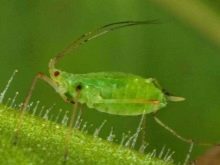
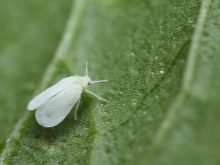

In the fight against the worm will help or soapy water, or insecticide. Spray the plant with insecticide, wipe it with soapy water. In both cases, you need to remove all secretions from the leaves and stems of the plant. If necessary, repeat the treatment in a month.
Important! If, in the case of aphids or worms, the second treatment may not be necessary, then in the case of a whitefly it is mandatory.
For information on how to care for terry pelargonium, see the next video.































The comment was sent successfully.